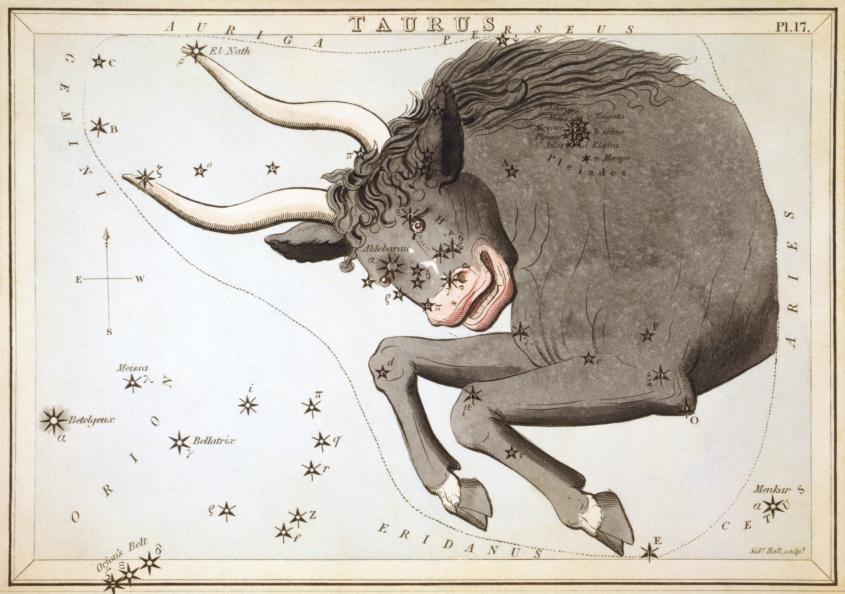Taurus (Bull)
The Bull is a very old constellation, known to several ancient civilizations. One of the first notations of the bull dates back to the old Sumerians, 3000 years B.C. In the Greek mythology, the god Zeus took on the shape of the bull in order to approach Europa, the beautiful daughter of Phoenician King Agenor.
Often, only the head of the bull is depicted, with the open star-cluster Hyades marking the face. The very bright and reddish star Aldebaran marks the eye, and the bright stars β and ζ Tauri mark the horns.
The Pleyades (another well-known open star cluster) and the Hyades together with the very bright and red Aldebaran make it fairly easy to find the bull in the night sky. In the northern hemisphere, it's prime time is in winter. Next to it is Orion, another popular and easy-to-find constellation. The Bull is also the origin of a small stream of falling stars. Around November 3 every year, about a dozen falling stars per hour can be seen.
Often, only the head of the bull is depicted, with the open star-cluster Hyades marking the face. The very bright and reddish star Aldebaran marks the eye, and the bright stars β and ζ Tauri mark the horns.
The Pleyades (another well-known open star cluster) and the Hyades together with the very bright and red Aldebaran make it fairly easy to find the bull in the night sky. In the northern hemisphere, it's prime time is in winter. Next to it is Orion, another popular and easy-to-find constellation. The Bull is also the origin of a small stream of falling stars. Around November 3 every year, about a dozen falling stars per hour can be seen.
This constellation belongs to the zodiac. Its time of the year is between April 21 and May 21.
It's brightest star is Aldebaran (α Tauri).
